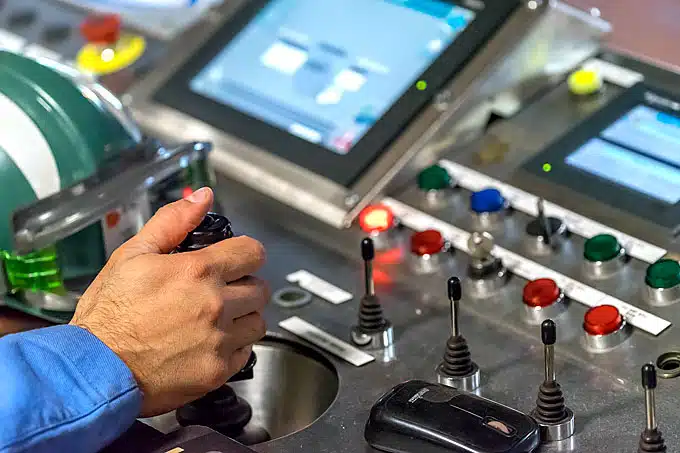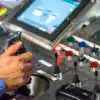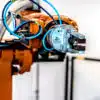Collaborative robots open new doors for industry automation
There has been a steady growth in the global industrial automation market. A great number of factors have had an impact on automation and enhancing productivity. Availability of favorable government policies and the advances of IT technology are just a few examples. At present, North America is the leader in industrial automation, followed closely by Europe, which has shown high rates in the last years.
The global industrial automation market is expected to reach billions by 2022. There are many benefits relating to the introduction of computers, machines, and, most importantly, collaborative robots. In addition to higher productivity, it is worth mentioning improved quality and flexibility, not to say higher accuracy of information.
Technologies are accelerating the growth of industrial automation. Manufacturers from all around the world are already implementing automatic equipment in manufacturing and other process facilities. This is what helps them stand out in the competitive marketplace. The industrial world is embracing the technological changes and meet its requirements. Big businesses are not the only ones who automate in order to remain competitive. Small and medium-sized enterprises are adding robotics to cope with higher volume work. What is clear is that the industrial environment is currently changing and it is only for the better. Cobots, as far as they are concerned, are opening new doors for automation, being used in environments that were not believed possible.
You do not have to pay top dollar for a robot
Advances in artificial intelligence and robotics have made it possible for premier models to be used in commonplace operations. The production of collaborative robots has increased, so models do not cost an arm and a leg. It is possible to acquire a robot without exceeding the budget. It is true that prices can range and that the complexity of the design, yet the prices are affordable. At first glance, an industrial robot might seem like an expenditure. Nevertheless, it is important to take into account the fact that a machine of this kind is very easy to use and is capable of doing many of the same jobs in a timely manner. Additionally, emerging economies are encouraging the production of bots, so they will be cheaper.
2 industries that have been improved by robotic automation
Robotic automation enables growth in numerous industries, helping businesses take control of their production. It is expected that adoption will increase with 10 percent around the globe in the following years. The number of tasks performed by automation by automation will grow as well. Universal Robots support the view that some industries are more likely to adopt robotic applications than others. Here are some examples:
-
Electronics manufacturing
Companies that design, manufacture, and distribute electronic components and products are struggling to deal with the high demand. Smartphones, tablets, earbuds, flat screen TVs, as well as other gadgets are in high demand. In the company, owners create physical products by hand or hiring workers. The issue is that employees are not able to withstand the mass production. They are human, after all. In order to achieve high levels of output, most electronics manufacturers resort to robotics. More specifically, they capitalize on robotic automation. Organizations are able to improve quality through the production process and lower operational costs. All this is possible thanks to collaborative robots. Machines can adapt to different product lines and are capable of doing more than one thing at a time, such as mounting components.
-
Automotive
Industrial automation has become something of a business solution. In other words, it helps the company meet its proposed objectives when it comes down to essential activities. The automotive world has greatly benefited from the use of collaborative robots. They have been able to handle the problem of labor shortages. There are countless facilities in which people and cobots work side by side. And they are perfectly fine with that. It is important to grasp the fact that robots will not replace human workers. Their job is to make their lives easier, taking on repetitive, complicated tasks. Artificial intelligence is nothing to be afraid of. Getting back on topic, the implementation of robots results in an increase in production. What happens is that robots are mounted on moving platforms that go under the vehicle production. Not many know that the history of robotics is closely linked to that of the automotive industry, being one of the very first ones to include robot systems in their production lines.
Is there any difference between automation and robots?
Automation and robots should not be confused. They do not refer to the same thing. Automation implies deploying software, machines, and similar technology to perform a task that is normally carried out by a human worker. Robots, on the other hand, are an engineering segment that makes use of robotic machines to execute tasks. They are mainly deployed in manufacturing industries so as to automate physical tasks. It is clear that the two are related, but attention needs to be paid to the fact that some branches of robotics have nothing to do with automation.
When you hear others discussing about automation and robotics in the same context, you can be sure that they are referring to industrial automation, which involves taking control and managing physical processes. It is necessary to determine what your company needs when it comes down to investing in resources. If you wish to have a fully autonomous factory like Amazon, you will have to invest in more than collaborative robots. Industrial automation is something to strive for. The initial investment is not so high, not to mention that employees now are tech-savvy and are therefore capable of handling sophisticated equipment.
Final considerations
Industrial automation is gaining acceptance from numerous industries owing to its enormous benefits. At present, collaborative robots are opening new doors for industry automation, in sectors such as electronics manufacturing, automotive, but also medical, military and public service, and welding. It is essential to not forget that this is just the beginning of the journey.








